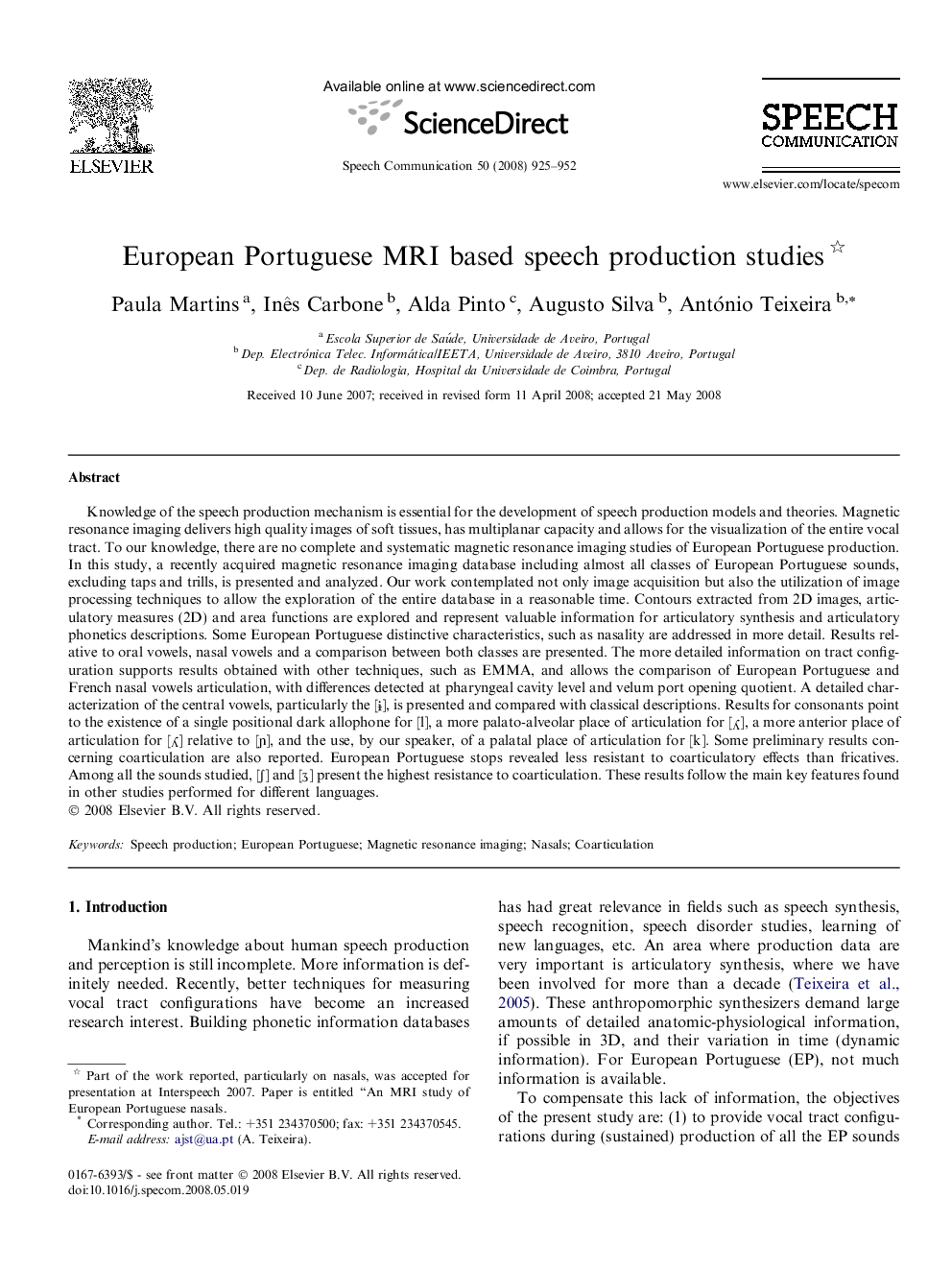| کد مقاله | کد نشریه | سال انتشار | مقاله انگلیسی | نسخه تمام متن |
|---|---|---|---|---|
| 566271 | 1452047 | 2008 | 28 صفحه PDF | دانلود رایگان |

Knowledge of the speech production mechanism is essential for the development of speech production models and theories. Magnetic resonance imaging delivers high quality images of soft tissues, has multiplanar capacity and allows for the visualization of the entire vocal tract. To our knowledge, there are no complete and systematic magnetic resonance imaging studies of European Portuguese production. In this study, a recently acquired magnetic resonance imaging database including almost all classes of European Portuguese sounds, excluding taps and trills, is presented and analyzed. Our work contemplated not only image acquisition but also the utilization of image processing techniques to allow the exploration of the entire database in a reasonable time. Contours extracted from 2D images, articulatory measures (2D) and area functions are explored and represent valuable information for articulatory synthesis and articulatory phonetics descriptions. Some European Portuguese distinctive characteristics, such as nasality are addressed in more detail. Results relative to oral vowels, nasal vowels and a comparison between both classes are presented. The more detailed information on tract configuration supports results obtained with other techniques, such as EMMA, and allows the comparison of European Portuguese and French nasal vowels articulation, with differences detected at pharyngeal cavity level and velum port opening quotient. A detailed characterization of the central vowels, particularly the [], is presented and compared with classical descriptions. Results for consonants point to the existence of a single positional dark allophone for [l], a more palato-alveolar place of articulation for [ʎ], a more anterior place of articulation for [ʎ] relative to [ɲ], and the use, by our speaker, of a palatal place of articulation for [k]. Some preliminary results concerning coarticulation are also reported. European Portuguese stops revealed less resistant to coarticulatory effects than fricatives. Among all the sounds studied, [ʃ] and [ʒ] present the highest resistance to coarticulation. These results follow the main key features found in other studies performed for different languages.
Journal: Speech Communication - Volume 50, Issues 11–12, November–December 2008, Pages 925–952